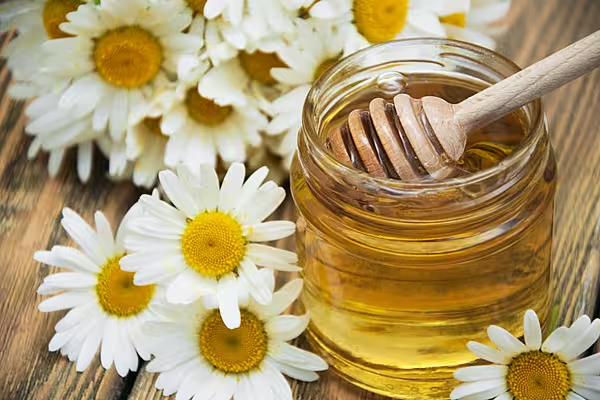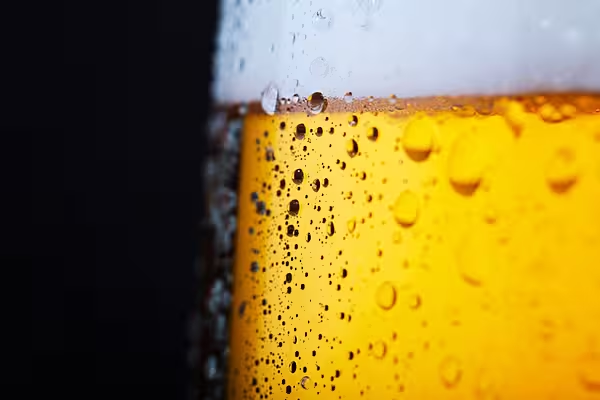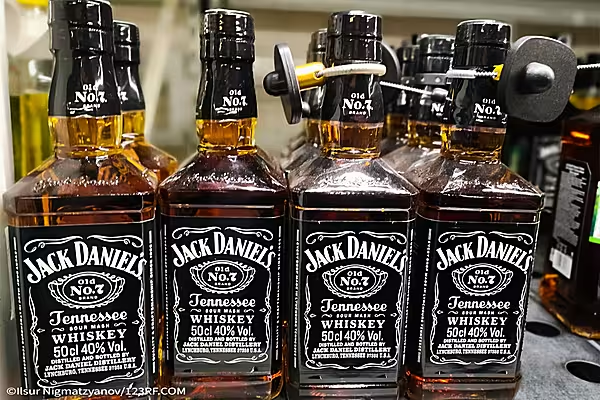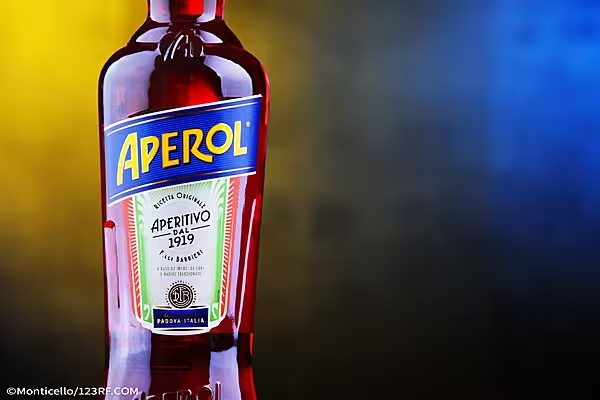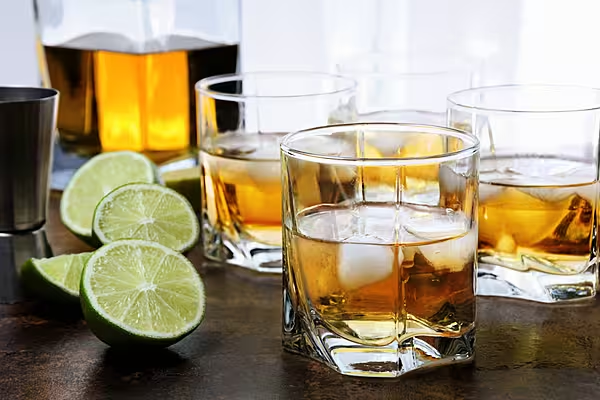In his recent three-star review of Agern—the Nordic-inspired restaurant in Manhattan’s Grand Central Terminal, from Noma founder Claus Meyer—New York Times restaurant critic Pete Wells called out mead as an oddball beverage.
“Strange things are happening in mead,” Wells wrote about the wine list, which includes an entire section of mead, “a beverage that is pretty strange to begin with.”
It’s true: For most Americans, mead is an unfamiliar beverage that’s commonly perceived as sweet and alcoholic and is often equated with Beowulf and Renaissance Faire enthusiasts. But it’s also part of an historic winemaking tradition, one that has been utilized the world over for millennia as a way of making a fermented beverage.
According to the American Mead Makers Association, mead is one of the fastest-growing alcoholic beverages in the country by sheer number of new producers. In 2003, the U.S. had roughly 30 producers. Today, there are more than 300, with meaderies opening in parts of the country as far flung as Portland, Me.; Richmond, Va.; Southern California; and even Alaska.
However, commercially available meads are still relatively rare, and the beverage hasn’t been fully embraced en masse. There’s no widely sold “six-pack” mead, for instance, the way that there is for beer and even cider. The new breed of meads are experimental and funky, infused with fruits and herbs that add tannins and bitterness to balance the honey’s sweetness.
“There’s pressure on the industry to think about mead the same way we think about grape wine,” said Raphael Lyon, a mazer, or meadmaker, based in New York. “They want you to have two or three different meads based on two or three different kinds of honey—‘varietal’ meads,” he says.
But to Lyon, who makes mead under the Enlightenment Wines moniker, honey may be the least important factor.
“People make the mistake of thinking about mead as a wine that’s made from honey and water,” he said. “If you start in the other direction, you’ll see that mead is a way of taking fruits and herbs and adding honey to them and fermenting it all together. The idea of just honey-plus-water doesn’t have any kind of historic authenticity.”
Lyon started Enlightenment Wines in 2009 out of a barn in the Hudson Valley. This summer, he expanded to a small production facility in Bushwick, Brooklyn, and opened an on-site tasting room and cocktail bar called Honey’s. There, mixologist Arley Marks serves Lyon’s bone-dry honey wines, along with several cocktails that feature mead, such as Night Eyes, made with sparkling mead, apples, and cranberries.
A hyper-educated, creative guy with art degrees from both Brown and Columbia, Lyon began making mead in the 1990s as a way of distancing himself from what he calls “the networks of commerce that fuel modern food systems.”
(If that sounds a little out of the mainstream for a commercial beverage producer, it is; mead seems to attract freethinkers and outsiders, as bees are drawn to, uh, honey.)
“I was really interested in, ‘What are the basics of survival?’” he explained. “Not from an apocalyptic sense but just to know what a self-sufficient farm looked like, what heirloom crops were.”
He takes a philosophical approach to making honey wine and sees himself as part of an historical winemaking tradition. He insists on using unprocessed honey, which is richer in nutrients, to make the yeast happy.
“The role of the mazer is about seeing the natural world,” he said, “finding the elements of it that you want to preserve, and using honey as the sugar basis for the fermentation process.”
Lyon said that thinking about mead the way we think about modern grape wine culture is historically fraught because “most alcohol for millennia was made from a bunch of different stuff.” For Lyon, that stuff includes such things as foraged dandelion flowers, wild apples, elderberries, juniper berries, lavender, marjoram, cranberries, tart cherries, rose hips, and sumac flowers, all of which find their way into the mead he makes.
“Mead made from just honey and water doesn’t have any tannin or structure,” said Lyon. “Using herbs and botanicals doesn’t just provide a flavor, it’s critical for the fermentation process. It clears the wine and it prevents microbial spoilage.” (The yeast and proteins are attracted to the botanicals and then fall out to the bottom of the fermenter with time.)
Despite its status as an outsider drink, mead is very much a global beverage.
In Africa, where mead is called Tej, it’s brewed with gesho, the dried roots and stems of a small shrub. Beowulf’s Anglo-Saxon meads were traditionally made with the dried flowers of yarrow weed. There’s even evidence that the ancient Egyptians and Chinese made and drank honey-based drinks.
But globally, mead is nowhere near as popular as it once was. As agriculture became prevalent, more easily grown and harvested ingredients such as barley and grapes became the dominant fermentable sugars of choice, and mead fell out of favor. The relatively high price of honey—up to $2 per pound, compared to pennies per pound for malted barley—is still the No. 1 reason mead doesn’t enjoy more mainstream success.
“There is pressure for mead makers to make a cheap 6 percent alcohol—really sweet, carbonated mead that’s put into six-packs of bottles or cans,” says Lyon. “I’m not saying that would taste good, but there’s always a market pressure to do that.” Lyon’s meads, by comparison, are wine-strength and dry, with flavors and aromas similar to those of "natural" wine.
At Agern, beverage director Chad Walsh said that mead is an important part of the restaurant’s identity.
“It’s a nod to our Scandinavian roots,” he said. “Many of our staff are from Scandinavia, and their first taste of alcohol when they were kids was mead.”
Walsh’s beverage list is populated exclusively by American produced wines, ciders, beers, and meads. He says it isn’t difficult to find great American-made meads; in fact, just as with craft beer, American craft mead makers are leading the reinvention and re-popularization of mead worldwide.
One of his most popular bottles is Utopian, a $180 mead from New Hampshire’s Moonlight Meadery. It is aged for five years in used Sam Adams casks that once held the brewery’s Utopias beer, a 29 percent ABV strong ale that tastes like Madeira. Thick and sweet with notes of vanilla and Bourbon, the mead is robust and sherry-like in flavor.
Walsh admitted that mead is a strange, unfamiliar beverage. But, he said, with that comes a tremendous opportunity for education.
“Education is our biggest challenge,” he said. “But that’s what’s great about mead. The palate is really broad, and the flavor spectrum is unrestrained.”
Five Meads to Try
The following meads can be hard to find in retail stores, but many are available online directly from their producers. They represent the range of flavors of honey wine and capture the geographic assortment of production styles and techniques from around the world.
Enlightenment Wines Saint Crimson, New YorkThis ruby-tinged mead is made from black currants and wildflower honey. The currants add tartness and tannins which is balanced by the sweetness of the honey. Lyon suggests serving it iced, as an aperitif, or mixing it as the base of a summer negroni. ($25 per 375-ml bottle)
Mjödhamnen Suttungabrygden, SwedenMjödhamnen is the project of a nomadic Swedish mazer who travels through the Nordic countryside making mead at different apiaries (bee farms). Suttungabrygden is a rose mead made with heather honey and lignonberries. ($24 per 750-ml bottle)
Nektar Tuco-Style Freakout, MichiganMichigan’s B. Nektar draws inspiration from an infamous Breaking Bad character for this lime zest-infused mead with a base of orange blossom honey. Agern’s Walsh recommends pairing it with a simple dish of oysters. As for justifying the crack pipe on the label, he laughs: “[Mead] is a strange scene filled with strange people.” ($10 per 500-ml bottle)
Makana Iqhilika African Herbal Blossom, South AfricaThis South African meadery is known for infusing mead with such ingredients as chile peppers, figs, and coffee, to varying degrees of success. One of the better experiments is this one infused with tea made from hibiscus, rose hips, licorice, cinnamon, and dried apples. ($23 per 750-ml bottle)
Melovino Berry Boku, New JerseyThis New Jersey-made mead uses a blend of mixed berries including raspberries, currants, blueberries, and strawberries for a blend of sweet and tart flavors. ($22 per 500-ml bottle)
News by Bloomberg, edited by ESM. To subscribe to ESM: The European Supermarket Magazine, click here.
